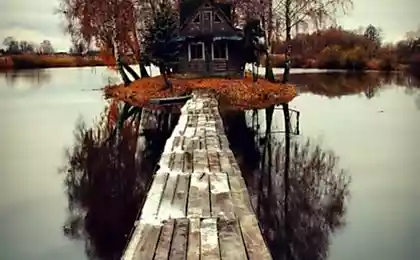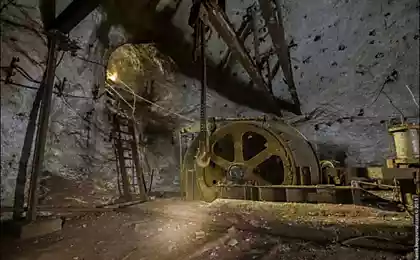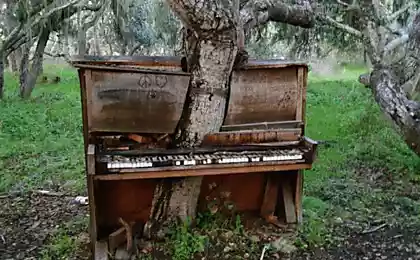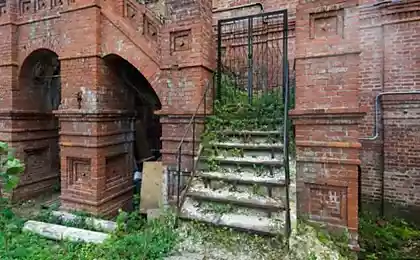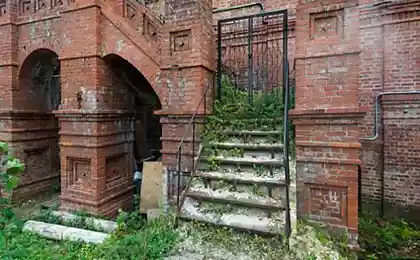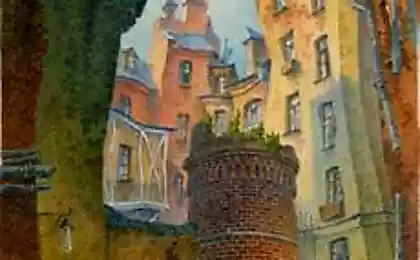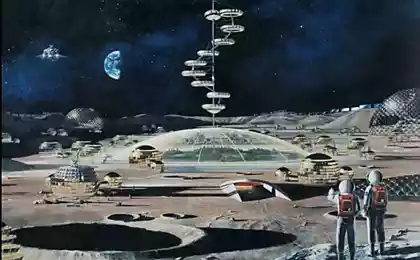1170
Chemical Laboratory

When any large industry starts to degrade or to decline it with a pull to the bottom of the associated research institutions, facilities and so on. d. They stop research lab close , dismissed the staff, in areas where work is in full swing yesterday, now empty. Sometimes it happens so suddenly, that all equipment and even personal belongings remain in enclosed buildings to fend for themselves. Most likely, this laboratory, which studies pesticides, it just happened.

The building, in the attic where we are now, was built in the 60s and has been abandoned for several years. Next to this laboratory are other housing Research Institute, which is still working. Apparently, therefore, the building is connected to electricity.

Before us ventilation hoods from chemical laboratories, which are located on the lower floors.

Just a building of three floors, the first and second - almost empty. But the third is the most interesting. It preserved almost all rooms. Here you can see the hood and extending from a pink tube ventilation cherdak.

In some areas a strong confusion as if here were performed obysk.

In other fairly clean and quite unlike the fact that the building has been abandoned for several years. Note plakaty.

Probably half-naked girls posters promote productivity. After all, in addition to the laboratory I have such a plan risque photos are very common in the industrial and scientific obektah.

The peculiar design of the working oborudovaniya.

I've always wondered left of the equipment, as if he can no longer find application. "Refractometer IRF-22 is designed for the direct measurement of the refractive index of the liquid and solids in the range 1, 3-1, 7 D-line and the average variance of the bodies with an accuracy of readings obtained from multiple measurements and does not exceed ± 2 * 10-4 for the refractive index and ± 1, 5 * 10-4 for the dispersion medium. The device can be used to quickly determine the concentrations of water, alcohol, ether and other solutions on the refractive index nD »- guide to polzovaniyu.

In chemical laboratories are always so many different glass containers.

When I saw so many useless glassware, I remembered my chemistry lessons at school, where there was a shortage of equipment and all were afraid to break some flask.

If our school would be such an abundance of chemical equipment and reagents, both in the laboratory, the interest in science among students would vyshe.

Find out why the lab was abandoned, it was not possible, perhaps in connection with the decline of agriculture in Russia, to develop and research new methods of chemical plant protection is no longer the case and as a result - reduction in funding, which entails the closure of the lab.

On the problems in the agricultural sector following facts - the grain harvest in 2012 amounted to 70 million tons, which is less than in Tsarist Russia, and significantly less than in the USSR. This remains to be seen how the quality of the grain. For example, in 2008, with a yield of 100 million. Tons of grain, only 40% was edible. In addition to the degradation of cultivated land has not yet been carried out due clipping of seeds, which increases the incidence of plant and crop deterioration.

Unfortunately, in Moscow and the Moscow region there is a tendency for the destruction of scientific objects created during the Soviet vlasti.

Thanks to distancing from residential areas, the abandoned laboratory managed for several years to be invisible and be saved from the looting.

But it was in 2011, and in late 2012, many have learned about the lab and began removal of all value, along with the destruction of equipment and chemical glassware - fun radi.

When these pictures were made in the laboratory always someone climbed and walked on the floors, despite the night vremya.

The corridor is bulky equipment that is likely to want to move out of the building, but for some reason peredumali.

In this room turned out to be unpacked books on the subject of pesticides.

Most DC-type MO-62.


Of course in this laboratory a huge amount of reagents. Some containers are broken and all the rooms are impregnated with specific zapahom.

Drying cabinet SNOL-3, 5. It is necessary to dry the products and materials. Able to maintain a temperature of 350 degrees Tselsiyu.

At this point, we have a surprise waiting for, among many hours got a copy of which had a strong radiation fon.

After spending more than two hours of laboratory procedures and inhaling chemical fumes, we leave the building. This Photos from the abandoned laboratory completed.

Source: saoirse-2010.livejournal.com/31893.html

